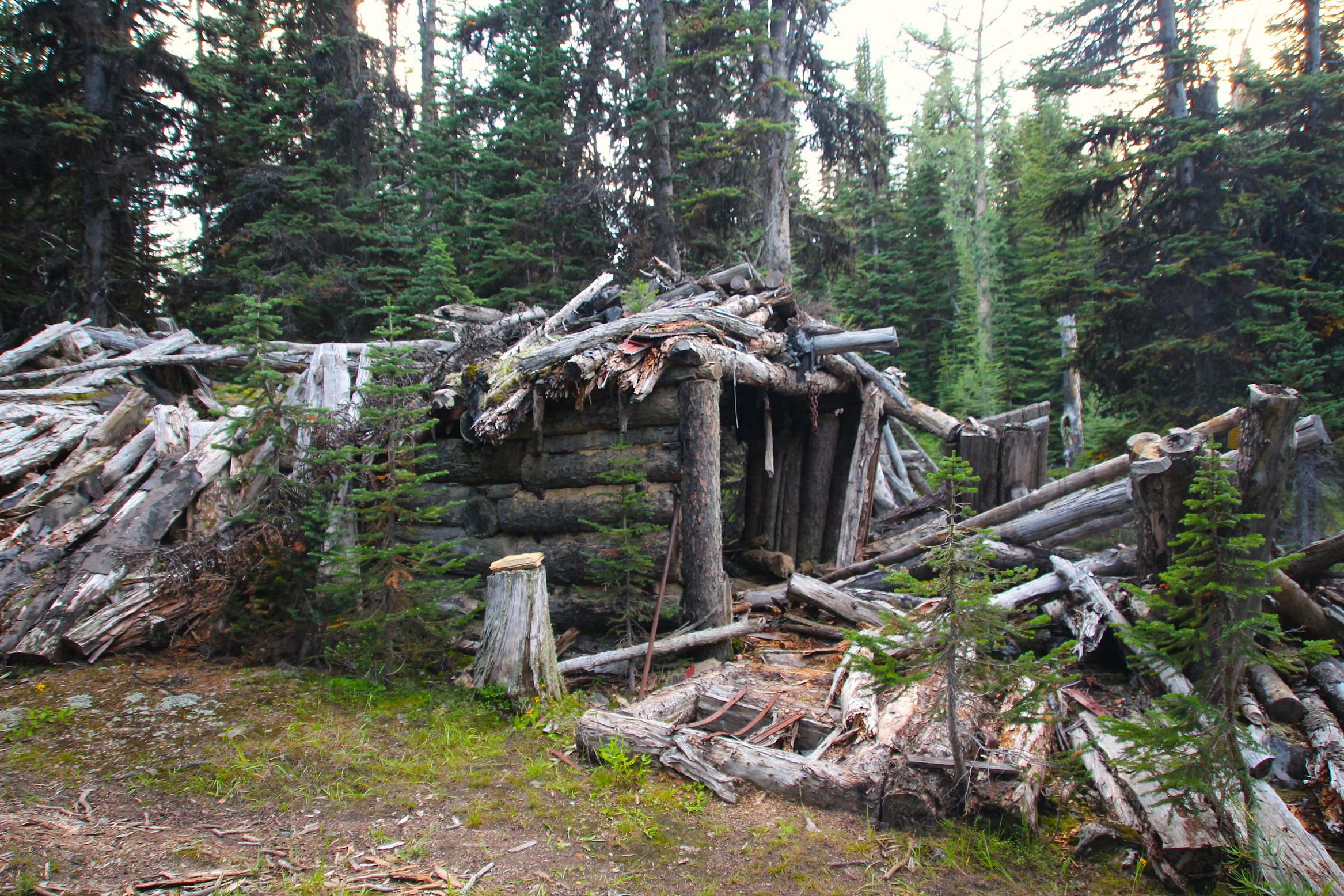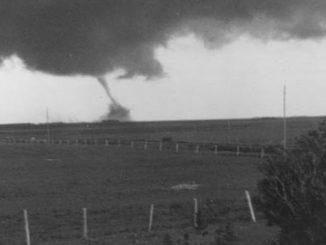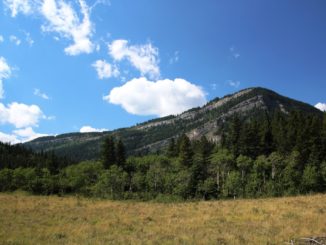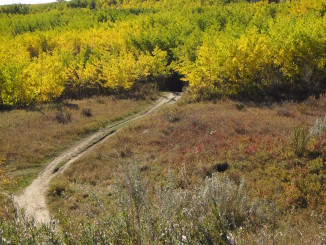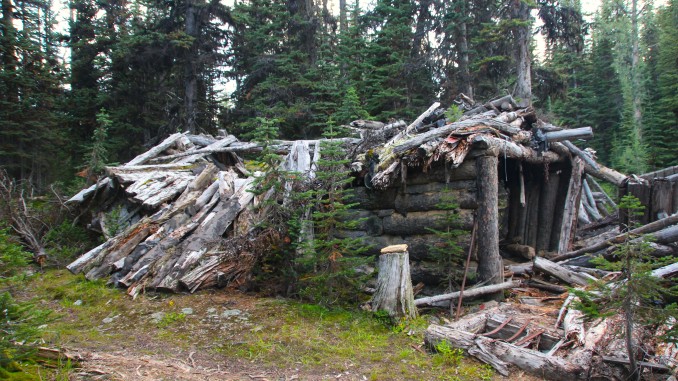
“I headed downslope to where the cubs were feeding and came up at them, hoping to scare them into one or another of my mining shafts for protection. It worked perfectly, as they ran for the nearest dark hole, and I went in with my ropes on the ready to see if I could catch one. I could hear the little fellows squealing in the dark and I paused a moment to let my eyes adjust. Just then I heard a tremendous roar and knew the sow was coming on the run looking for her wayward offspring. It didn’t take her a moment to pick up the scent and she headed straight for the mouth of the shaft bent on destruction….”
-Entry from Bill Peyto’s Mountain Journal “Ain’t It Hell” – May 15, 1910
Anyone that’s ever been to Banff National Park has encountered Bill Peyto, even if they weren’t aware of it. His likeness adorns the “Welcome to Banff” signs that greet visitors as they enter town. The raucous saloon on the corner of Banff Ave. and Caribou Street borrowed his famous moniker for their name; Wild Bill’s. Bill Peyto’s Café, a restaurant in Lake Louise that’s quickly becoming a favourite among locals, also bears his title. He even has a lake, a glacier, a mountain, and an Alpine Club of Canada hut all named in his honour. The man has reached legendary status in the wilds of Alberta.
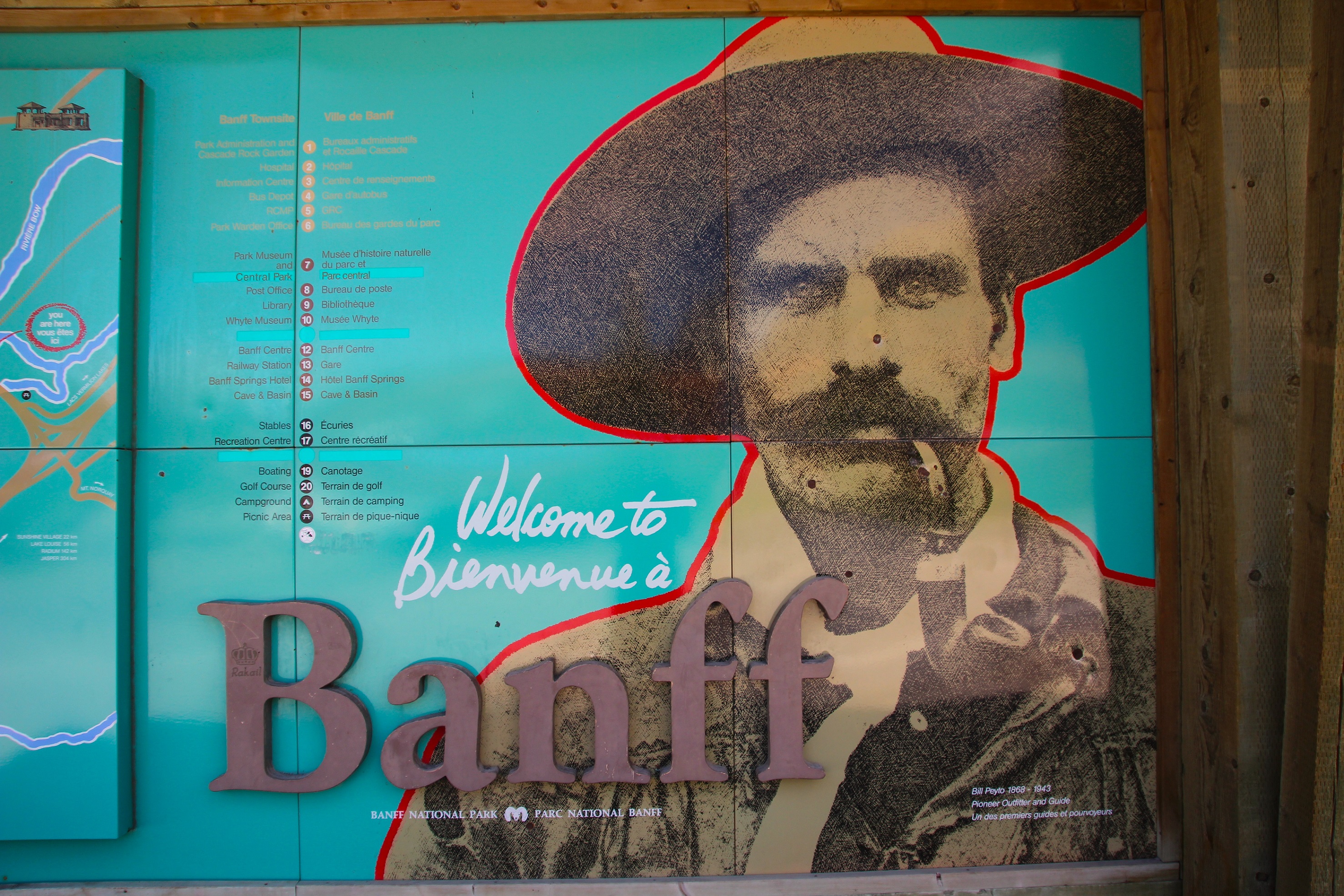
Ebenezer William “Bill” Peyto was born in England in 1868 and immigrated to Canada in 1886 at the young age of 18. He eventually made his way to the Rocky Mountains of Alberta where he proved to be a proficient outfitter and mountaineer. Between enlistments in the Boer War and World War I, Peyto joined the Warden Service, making him one of the first wardens in Banff, which was known as Rocky Mountains National Park at that time. He married Emily Wood in 1902 and the birth of their son Robert soon followed. Emily suddenly passed away in 1906 and Robert was sent to live with his mother’s family for a time. Peyto remained with the Warden Service until his retirement in 1934. After retiring he lead a very private life until his death in 1943.

The stories about his exploits, embellished or not, are sure to lure even the most indifferent bystander into the mystique that is Bill Peyto. There’s the one where he walked into a Banff bar with a live Lynx strapped to his back, sending the patrons running for the exits, giving Peyto the place to himself. Or the winter he raised two orphaned Cougar kittens in one of his secluded cabins so they wouldn’t perish. Or how he would regularly leave clients alone for the night during outfitting expeditions so he could have some solitude. It was his need for privacy and seclusion that drove him deeper into the wilderness where he could coexist with the natural world instead of the man-made one that was rapidly developing around him. Peyto erected several cabins in the Healy Creek area of Banff National Park where he could be alone and maintain his other interests such as trapping, prospecting, and mining.
Several years ago I learned at least one of Peyto’s cabins was still standing; hidden away from the public as Peyto himself had intended. I’m not referencing his fully restored cabin that sits on the grounds of the Whyte Museum, but a cabin that remains exactly as it was when Peyto left it for the final time. I immediately started researching, hoping to uncover the location, but like surviving a harsh winter in the Canadian backcountry, finding the cabin proved exceedingly difficult. Google searches only revealed veiled references to the cabin’s existence; nothing concrete in terms of an actual location. Discouraged, but not defeated, I turned to word of mouth tactics and began talking with folks that knew about the cabin and some who had even been there. Despite my best efforts I was only able to uncover the fact that the cabin truly does exist and that it was in the vicinity of Simpson Pass. It appeared that the cabin’s location was a closely guarded secret and without specific details searching that vast forested area would be the equivalent of looking for the proverbial needle in a haystack. I didn’t give up entirely of standing in Peyto’s forgotten cabin, but my hopes were diminishing rapidly.
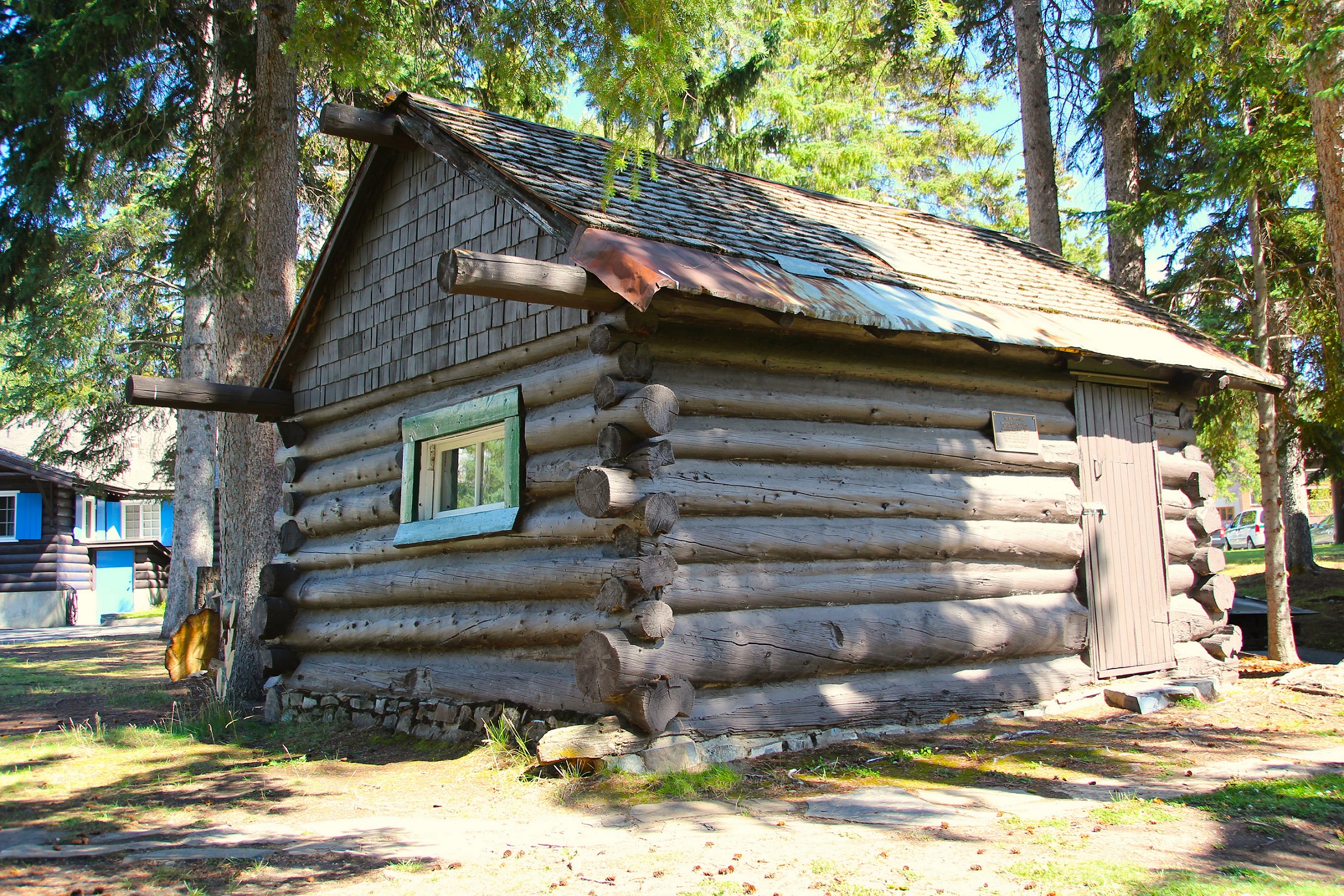
A few years passed and my plans went into hibernation until I caught a break. As the Outdoor Editor for Calgary Guardian I was invited to Sunshine Meadows for a media day program they were hosting. Our guide for the day (Alex) was supplied by White Mountain Adventures and knew of Peyto’s cabin, but hadn’t actually been there himself. He too was interested in finding the elusive cabin so we joined forces, gathering intel from a variety of places. One of the biggest pieces of the puzzle came in the form of a cryptic, eight-lined poem, written by Jim Deegan, a guest of Peyto’s at the cabin, which he refers to as ‘Bookrest’. The poem describes the cabin using obscure references to the area, loosely hinting at its secretive location.
On Simpson Pass, atop the Divide,
among the yellow tamarack
stands a cabin in a meadow,
a lone prospectors shack.
Weathering in the elements,
abandoned in the vale,
a sod-roofed fortress, built
beside an old packtrail.
Armed with the poem and a rough map indicating the cabin’s approximate location within a large circle, Alex and I put boots on the ground and set-off in search of Peyto’s mysterious cabin. On a typical day the stunning hike towards Simpson Pass would have been reward enough, but the prospect of finally finding Bookrest was all consuming.
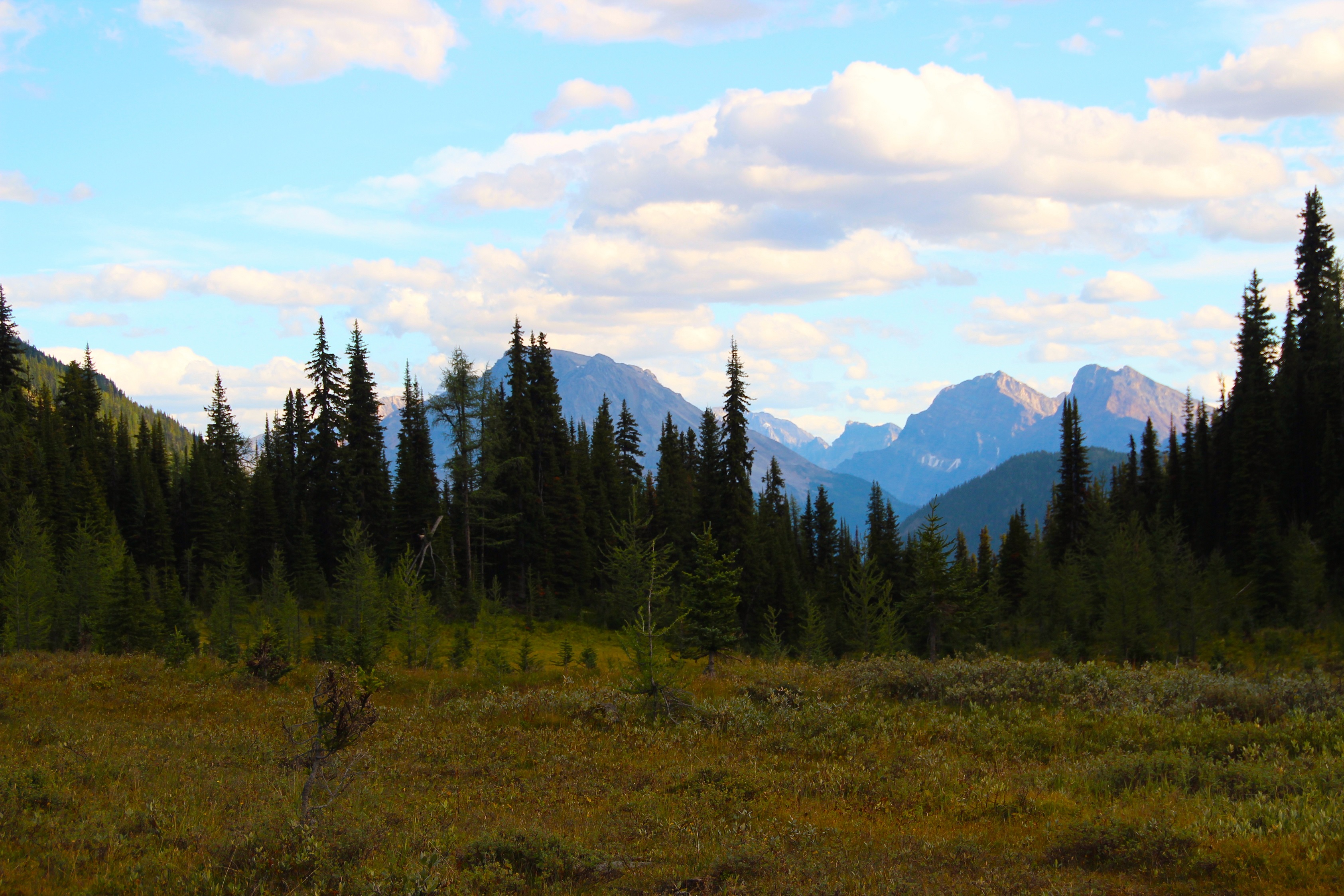
As the sun sat low in the sky we began our search, making several passes through dense forest, always remaining within auditory contact of each other. I expected to see the cabin around every corner, but we kept coming up empty handed. Although we observed evidence of previous human existence in the area, such as hand-sawn tree stumps, the cabin continued to elude us. With hunger panging our stomachs like a drum we decided to refuel and refocus while appreciating an unmatched view of The Monarch.
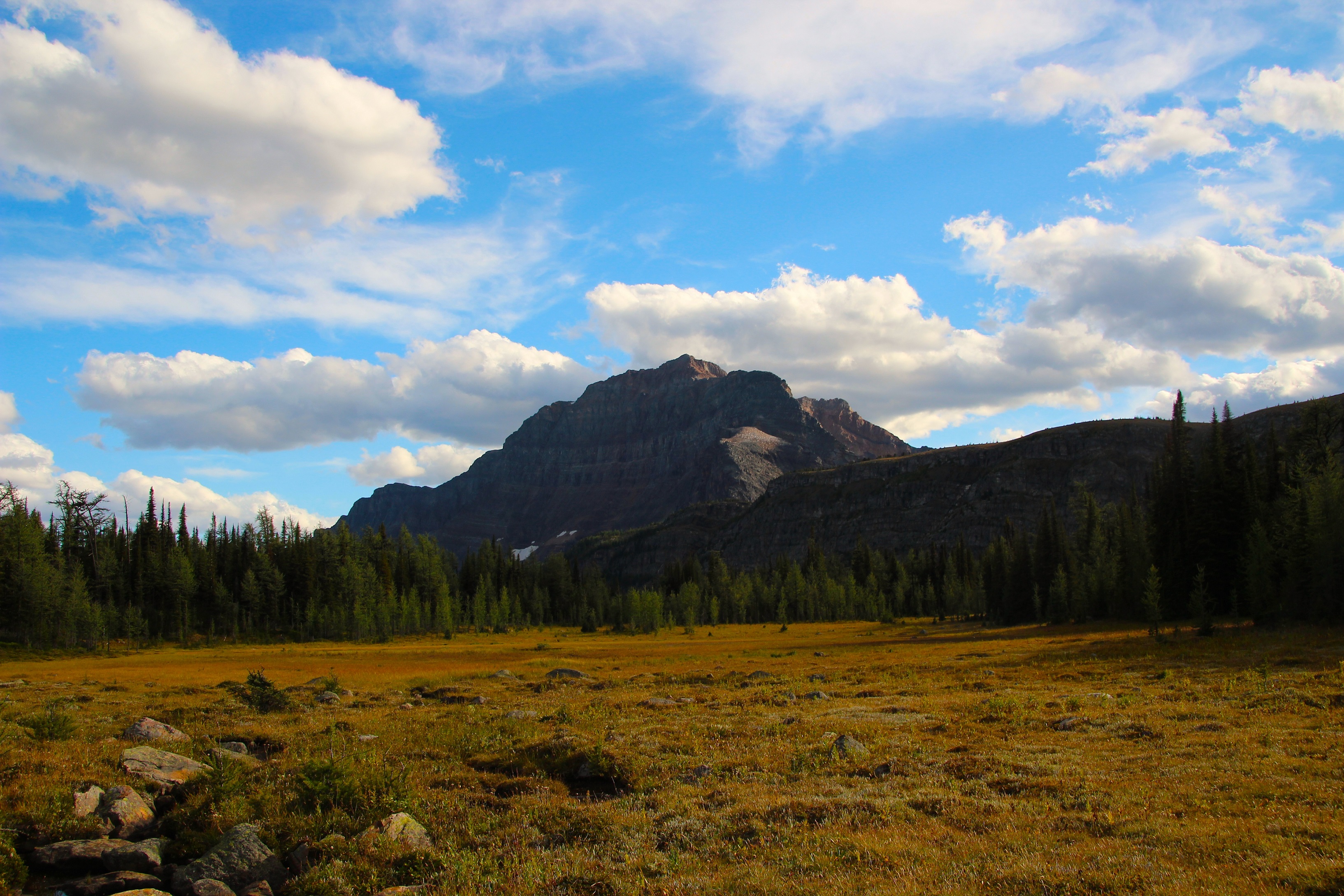
Once our bellies were full we took another look at the map and the poem, hoping to uncover additional clues that we’d originally missed. We formulated a new plan and again set off into the forest. Quicker than either of us had imagined, we stumbled upon an overgrown trail that obviously hadn’t been used in quite some time. With rekindled enthusiasm we hurried down the trail, hoping we were finally on the right one. The old trail was so overrun with brush that eventually it became impassable. We split up, one going left, one right, to search for a way around the barrier. As if by some coincidence, while checking-in with one another, we both stopped mid-sentence and stared off into the distance, trying to process what we were seeing. Tucked away in a stand of Larch and Pine, scarcely visible from our respective locations, sat the ramshackle remains of Bill Peyto’s Bookrest Cabin. We had found it! Just by laying eyes on this obscure refuge we had joined a select fraternity with very few members.
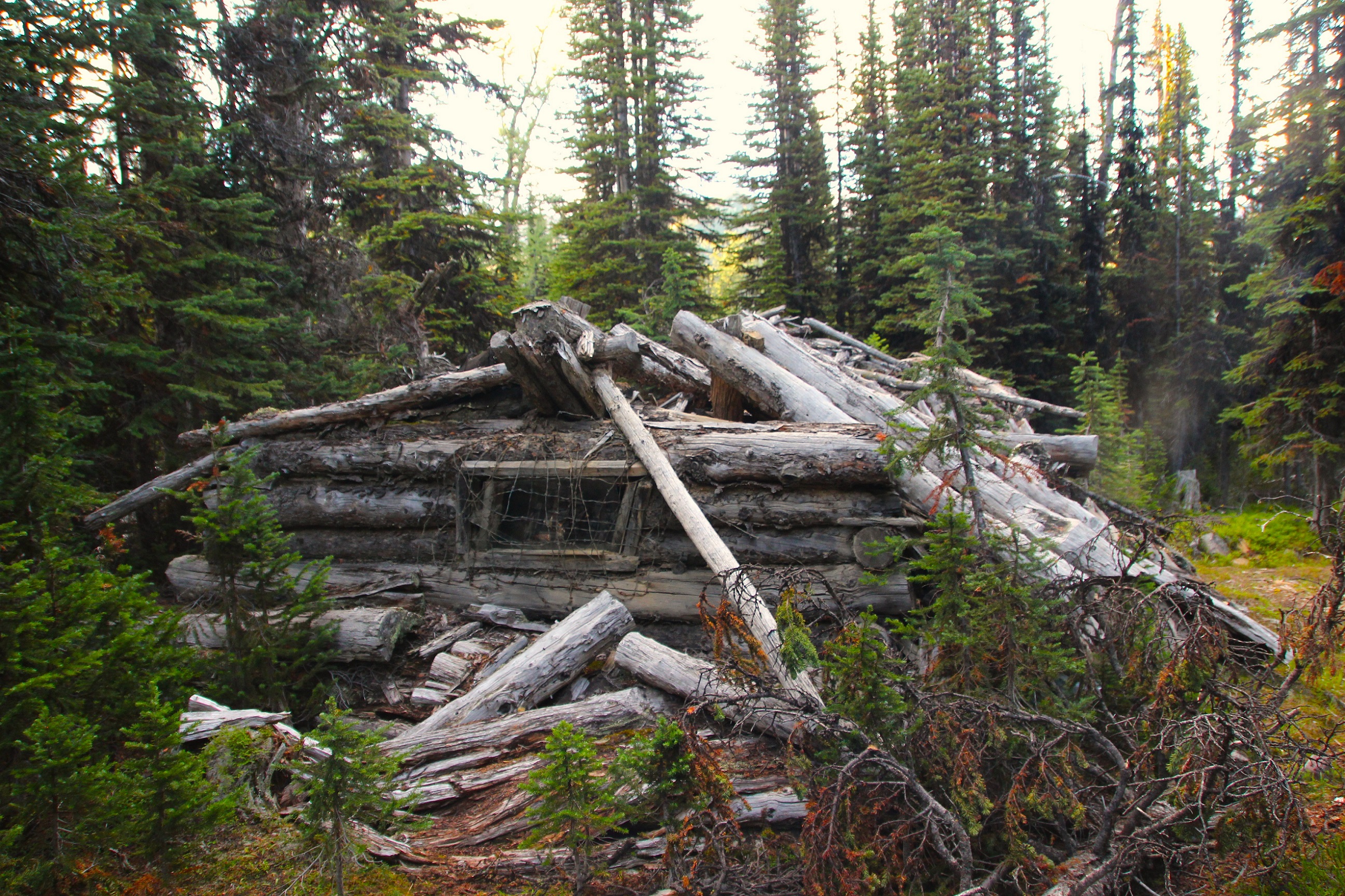
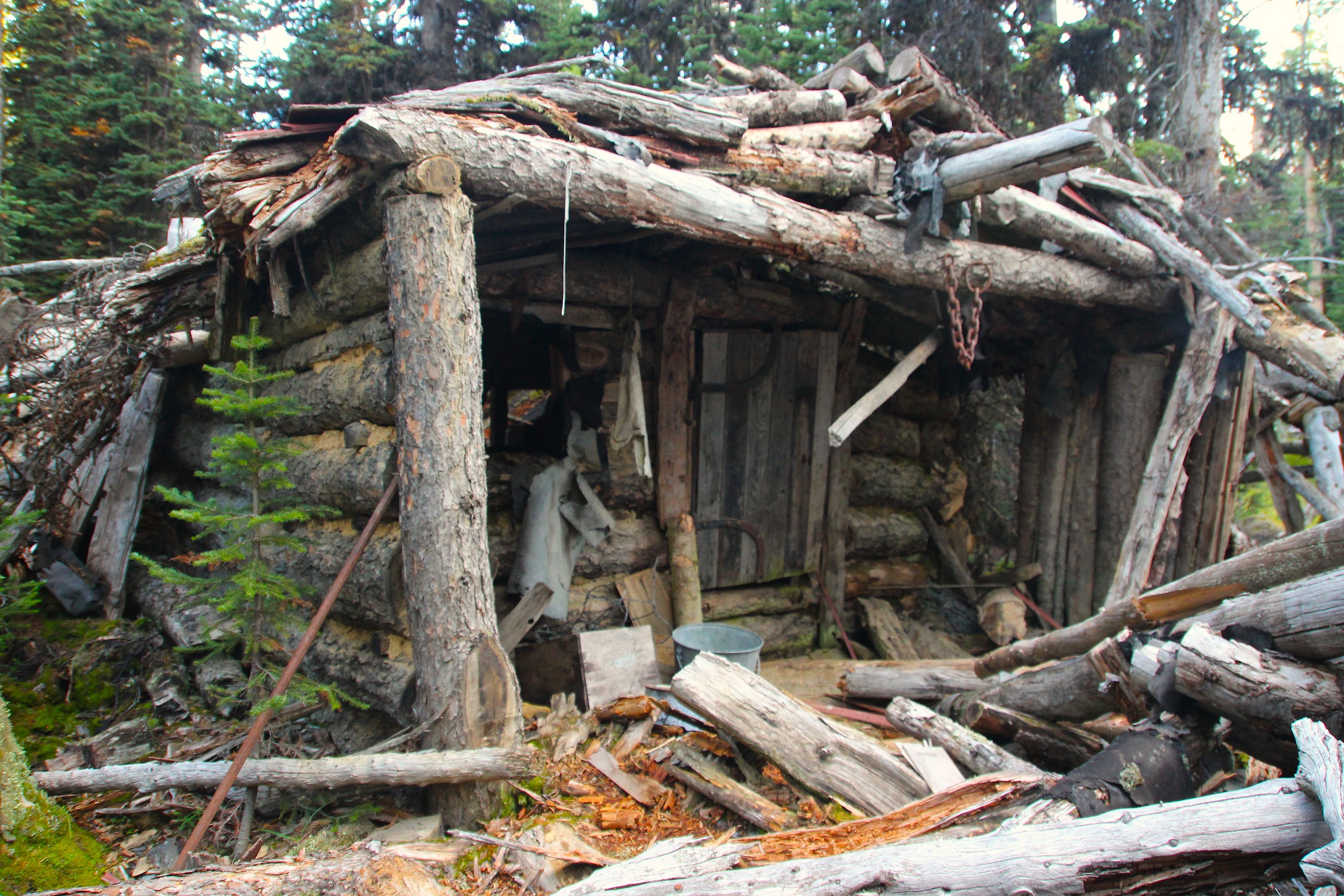
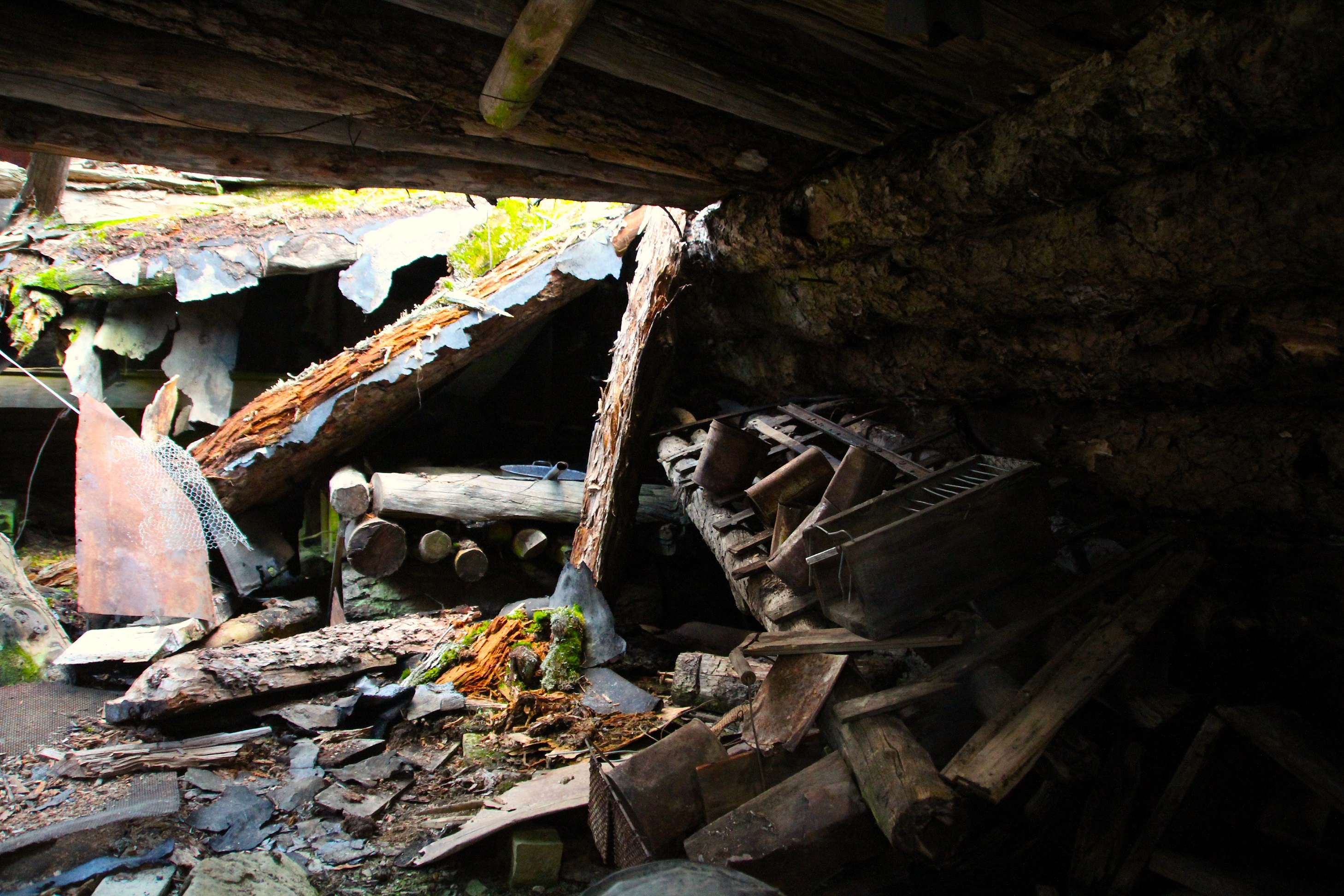
Eager to thoroughly explore the cabin’s derelict remains, but hyper aware of the rapidly fading daylight, we made the most out of the short time we allotted ourselves at the cabin. As our time expired and we began hiking back to the trailhead I couldn’t help but smile. My ambitious search for the colourful character that was Bill Peyto had ended. This pioneer of the wilderness, who made the mountains his home and worked hard to maintain an isolated lifestyle, just had the curtains pulled back on a small part of his mysterious existence. My venture was not out of disrespect, but of curiosity; an inquisitiveness to learn more about the man and how he prospered in a very different time.
Don’t worry Bill, your secret is safe with me!
